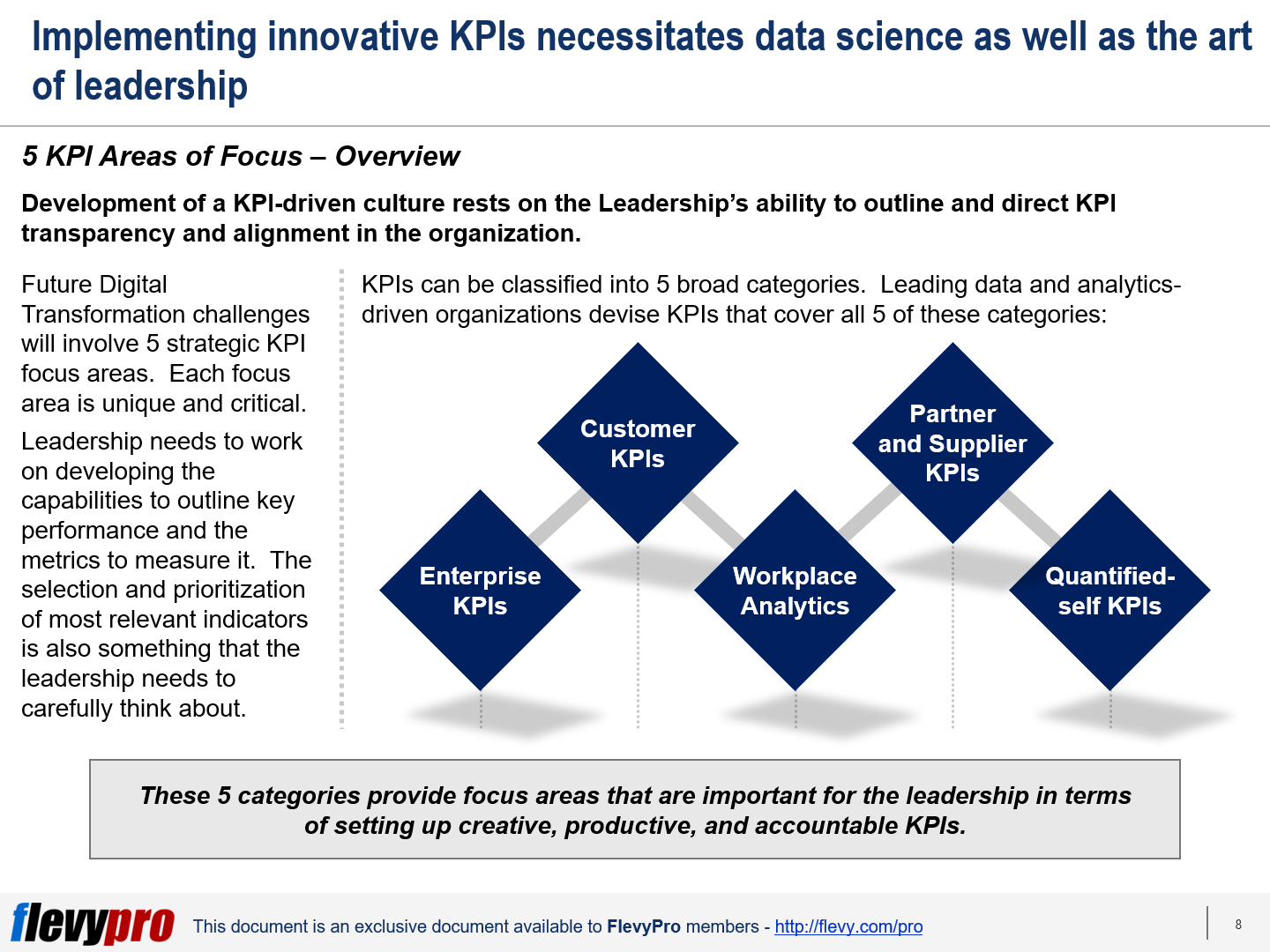 Creating a culture that measures productivity objectively is a sensitive matter. Key Performance Indicators (KPIs) are being employed extensively by organizations across the globe to monitor and track performance. KPIs provide valuable metadata to improve top-down and bottom-up vertical efficiency.
Creating a culture that measures productivity objectively is a sensitive matter. Key Performance Indicators (KPIs) are being employed extensively by organizations across the globe to monitor and track performance. KPIs provide valuable metadata to improve top-down and bottom-up vertical efficiency.
Analytics-driven firms are aware that KPIs are much more than a tool to evaluate performance. Utilizing KPIs, they gather valuable insights, create enterprise-wide accountability, and develop a goal-oriented culture.
However, most executives typically fall short of utilizing KPIs to their full potential. They have to realize that the effectiveness of KPIs depends on two distinct yet important elements: KPI transparency for the entire workforce—making the core metrics available across the board at all levels—and alignment of KPIs—determining the KPIs most relevant to the people and organizational purpose, and taking action based on the results of performance monitoring. Leading organizations share KPIs with all stakeholders and use algorithms to gauge the contribution of KPIs to critical functions, e.g., Marketing and Customer Experience.
To create an objective-driven culture, the senior leadership should work on developing capabilities to outline key performance and putting in place accurate metrics to measure it. The selection and prioritization of most relevant indicators is something that the leadership needs to carefully think about.
When defining KPIs, there are 5 KPI focus areas. Each focus area is unique and critical, but collectively they have a profound impact on each other and on the organizations that are aiming to undergo Digital Transformation. Leading Data and Analytics-driven organizations devise KPIs that cover all 5 of these focus areas:
- Enterprise KPIs
- Customer KPIs
- Workplace Analytics
- Partner and Supplier KPIs
- Quantified-self KPIs
Let’s discuss the first 3 focus areas in detail, for now.
Enterprise KPIs
The Enterprise KPIs benchmark the effectiveness of core functions of an organization. These indicators are important to determine the accountability of the leadership and workforce, and are vital for strategic as well as routine decision-making and investment. Examples of these indicators include Risk-Adjusted Return On Capital (RAROC) and Net Promoter Score (NPS).
Customer KPIs
The Customer KPIs facilitate in measuring the knowledge and impact of all leads, prospects, and customers. These metrics are used to calculate the actual and likely financial contributions of business prospects and clients. The Customer KPIs assist in analyzing and ranking the relationships that organizations aspire to develop with the customers and better understanding each segment and sales funnel the customers belong. Customer lifetime value is an example of these indicators.
Workplace Analytics
The Workplace Analytics pertain to quantifying the efficiency and commitment level of organizational people. These analytics are used to isolate leadership tools and methodologies helpful in enhancing customer focus, and capture and quantify process outcomes and outputs feeding organizational KPIs. These metrics are valuable in measuring collaboration across the organization, gauging the proficiency of managers in motivating their teams, and highlighting the elements that demoralize people.
Interested in learning more about the 5 KPI areas of focus? You can download an editable PowerPoint on Key Performance Indicators (KPIs): 5 Areas of Focus here on the Flevy documents marketplace.
Are you a Management Consultant?
You can download this and hundreds of other consulting frameworks and consulting training guides from the FlevyPro library.

Comments